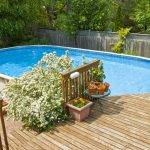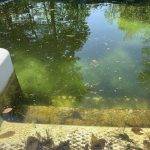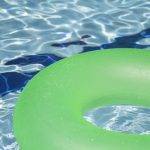Black algae can be the bane of pool ownership. The spores enter swimming pools through the air and can take root in the plaster of an inadequately chlorinated pool. These roots, along with the waxy protective barrier it forms around itself, make it particularly difficult to remove. When it comes to black algae, an ounce of prevention is worth two tons of cure. Anyone who has ever dealt with a black algae infestation can attest to this. It is far better to avoid black algae by focusing your efforts on maintaining the proper chlorine (FC) level according to your pool’s CYA along with a weekly brushing of the pool surface and, for those of you with seasonal pools, by following our recommended closing and opening procedures located on this page: Pool Equipment.
Black algae typically afflicts plaster pool surfaces; it is virtually impossible in vinyl or fiberglass pools due to the smooth surface that prevent the roots from embedding themselves. It usually appears on the pool surface as isolated black spots, dark circular patterns, or blotchy black patches. A few samples are shown below.
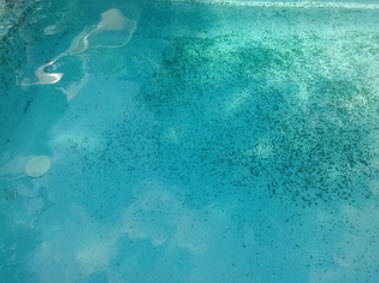
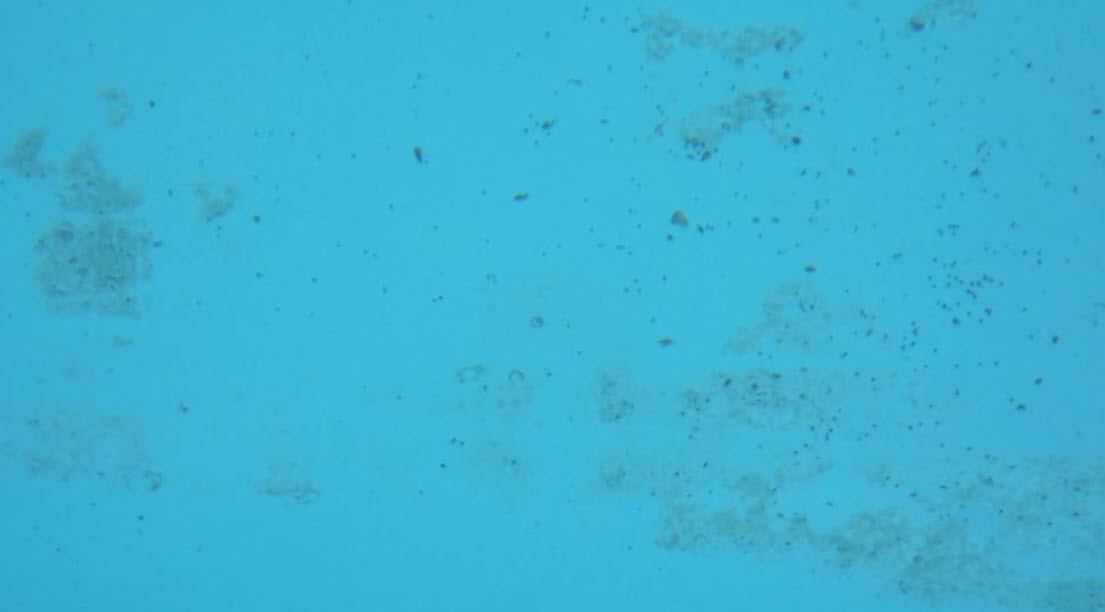
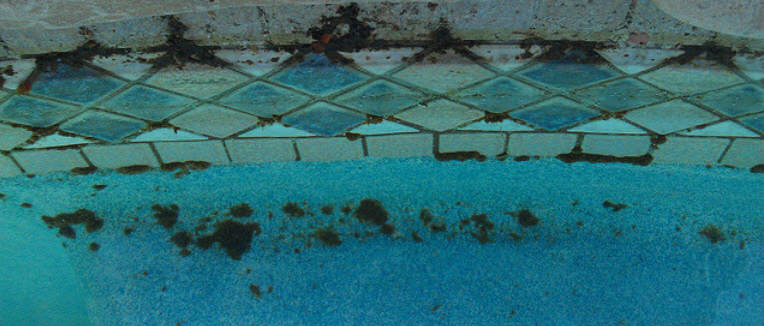
However, there are a couple of black algae “false-alarms” if the black spots appear as isolated dots on the pool surface. The first of these can result if a granular fertilizer or lawn treatment containing iron was applied anywhere near the pool. If any wayward granules fell into the pool, the iron in these granules will cause dark spotting where they landed. The second false-alarm is that smooth white plaster surfaces sometimes contain small dark aggregate particles embedded within the plaster (usually near steps) that act as an anti-slip surface.
If you have ruled out the false-alarms described above, then gently scrape a sample of the suspected black algae with your fingernail and then smudge it on plain white paper. If the smudge scrapes off and is a greenish color, then it’s black algae. The good news is that it can be removed. While it will not require the intensely-elevated FC levels used in treating green or mustard (yellow) algae, it will usually take more time and will necessitate much more “elbow-grease” on your part. Let’s get started…
- Brushing – its importance in removing black algae cannot be overstated. Brushing is required to rupture black algae’s protective barrier and prevent it from reforming. You will want a stainless steel brush to use on the plaster to knock off the algae’s protective coating so that the chlorine can attack the algae itself. Make sure you have the proper brush handy before proceeding to step 2.
- Maintain an FC level between the high end of the recommended “Normal” range and the Shock (SLAM) level according to your pool’s CYA level. For example, if your pool’s CYA is 40, the high end of the “Normal” FC range is 7 ppm and the Shock/SLAM level is 16 ppm. Maintain FC within this range until all signs of black algae are gone. Refer to either the PoolMath tool or the Chlorine/CYA Chart for the recommended FC ranges.
- Brush the black spots several times per day. You will have to brush more vigorously than you would during the normal weekly maintenance brushing.
- Look behind light fixtures, around ladders, and underneath removable steps for any black algae hiding in and around these areas. If any is found, it will need to be removed as well.
After several days to a week, if the above procedures are not resulting in noticeable improvement, you may have to add the following step to the removal repertoire (and it’s no picnic):5. Rub a trichlor puck along all of the black algae-infested areas of the pool. This is best done immediately after brushing so the concentrated amount of chlorine can come in direct contact with the algae itself. Note that the acid in a trichlor puck can remove a thin layer of plaster which could result in slight discoloration. Therefore, this step should be performed only if steps 2-4 above are not resulting in a noticeable improvement after several days to a week.Unfortunately, the procedure for removing black algae does not lend itself to a standard regimen where you can make rote statements like “Brush your pool X number of times a day”, or “Hold FC at X level for this long” and expect the algae to go away in X number of days. Because every pool and black algae outbreak is different, you may need to vary the steps above in terms of frequency, mix, and intensity based on observation of progress. And remember to pack your POP (Pool Owner’s Patience/Persistence).
A couple of parting notes…Once the algae is gone, it is recommended that FC is maintained at the high end of the normal FC range for a week or so to aid in eradicating any invisible remnants. Also, if your plaster is less than one year old, it is recommended to switch back to a nylon brush for use in the weekly maintenance brushing of the pool surface.



